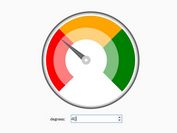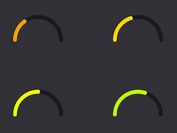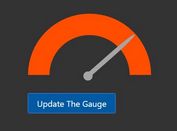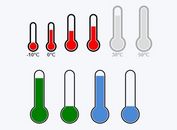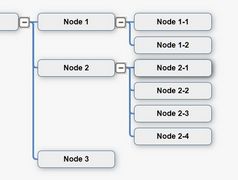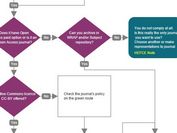Graphical Gauge Meter With jQuery and Dx.js
| File Size: | 6.75 KB |
|---|---|
| Views Total: | 15235 |
| Last Update: | |
| Publish Date: | |
| Official Website: | Go to website |
| License: | MIT |
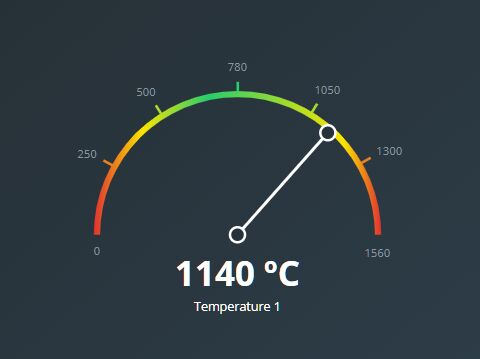
An elegant, animated, graphical gauge meter/chart that uses jQuery and dx.js libraries for SVG drawing.
Playground:
How to use it:
1. Load the needed JavaScript libraries in the document.
<script src="jquery.min.js"></script> <script src="dx.all.js"></script>
2. The main function to generate a Gauge. Don't forget to override the options & settings as displayed betlow.
class GaugeChart {
constructor(element, params) {
this._element = element;
this._initialValue = params.initialValue;
this._higherValue = params.higherValue;
this._title = params.title;
this._subtitle = params.subtitle;
}
_buildConfig() {
let element = this._element;
return {
value: this._initialValue,
valueIndicator: {
color: '#fff'
},
geometry: {
startAngle: 180,
endAngle: 360
},
scale: {
startValue: 0,
endValue: this._higherValue,
customTicks: [0, 250, 500, 780, 1050, 1300, 1560],
tick: {
length: 8
},
label: {
font: {
color: '#87959f',
size: 9,
family: '"Open Sans", sans-serif'
}
}
},
title: {
verticalAlignment: 'bottom',
text: this._title,
font: {
family: '"Open Sans", sans-serif',
color: '#fff',
size: 10
},
subtitle: {
text: this._subtitle,
font: {
family: '"Open Sans", sans-serif',
color: '#fff',
weight: 700,
size: 28
}
}
},
onInitialized: function() {
let currentGauge = $(element);
let circle = currentGauge.find('.dxg-spindle-hole').clone();
let border = currentGauge.find('.dxg-spindle-border').clone();
currentGauge.find('.dxg-title text').first().attr('y', 48);
currentGauge.find('.dxg-title text').last().attr('y', 28);
currentGauge.find('.dxg-value-indicator').append(border, circle);
}
}
}
init() {
$(this._element).dxCircularGauge(this._buildConfig());
}
}
3. Create a container element to hold the gauge meter.
<div class="gauge"></div>
4. The necessary CSS/CSS3 styles for the gauge meter.
.gradient-mask {
visibility: hidden;
}
.gauge-container {
padding: 20px;
margin-top: 80px;
display: flex;
justify-content: space-around;
}
.gauge {
height: 220px;
width: 300px;
}
.gauge .dxg-range.dxg-background-range {
fill: url(#gradientGauge);
}
.gauge .dxg-line {
-webkit-transform: scaleX(1.04) scaleY(1.03) translate(-4px, -4px);
transform: scaleX(1.04) scaleY(1.03) translate(-4px, -4px);
}
.gauge .dxg-line path:first-child,
.gauge .dxg-line path:last-child {
display: none;
}
.gauge .dxg-line path:nth-child(2),
.gauge .dxg-line path:nth-child(6) {
stroke: #ed811c;
}
.gauge .dxg-line path:nth-child(3),
.gauge .dxg-line path:nth-child(5) {
stroke: #a7db29;
}
.gauge .dxg-line path:nth-child(4) {
stroke: #25cd6b;
}
.gauge .dxg-elements text:first-child {
-webkit-transform: translate(19px, 13px);
transform: translate(19px, 13px);
}
.gauge .dxg-elements text:last-child {
-webkit-transform: translate(-27px, 14px);
transform: translate(-27px, 14px);
}
.gauge .dxg-value-indicator path {
-webkit-transform: scale(1.2) translate(0, -5px);
transform: scale(1.2) translate(0, -5px);
-webkit-transform-origin: center center;
transform-origin: center center;
}
.gauge .dxg-value-indicator .dxg-title {
text-transform: uppercase;
}
.gauge .dxg-value-indicator .dxg-title text:first-child {
-webkit-transform: translateY(5px);
transform: translateY(5px);
}
.gauge .dxg-value-indicator .dxg-spindle-border:nth-child(4),
.gauge .dxg-value-indicator .dxg-spindle-hole:nth-child(5) {
-webkit-transform: translate(0, -109px);
transform: translate(0, -109px);
}
.gauge .dxg-value-indicator .dxg-spindle-hole {
fill: #26323a;
}
5. The JQuery script to draw the gauge meter on the page.
$('.gauge').function(item){
let params = {
initialValue: -20,
higherValue: 40,
title: `Temperature`,
subtitle: '22 ºC'
};
let gauge = new GaugeChart(item, params);
gauge.init();
});
This awesome jQuery plugin is developed by Bruno Carvalho. For more Advanced Usages, please check the demo page or visit the official website.

